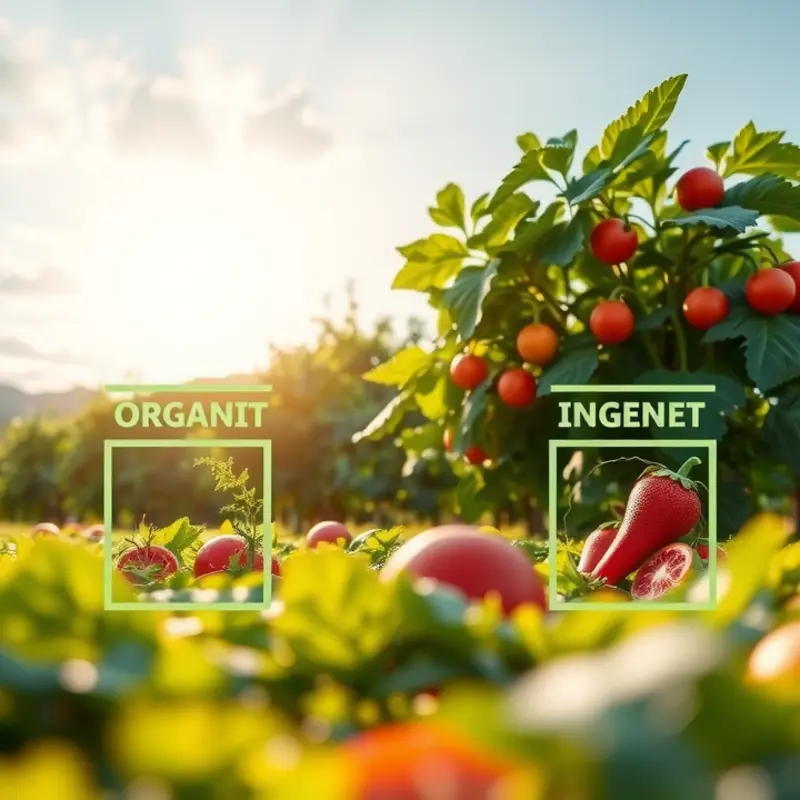Meal planning and preparation don’t have to be daunting tasks filled with overly complicated recipes or lengthy shopping lists. Instead, these practices can be simple, efficient, and even enjoyable! This article focuses on practical ingredient optimization strategies tailored for busy individuals and families, helping you maximize your time in the kitchen while keeping meals nutritious and delicious. With a little planning and creativity, you can simplify your meal routines and make family mealtimes a breeze.
Smart Ingredient Choice for Efficient Meal Planning

Choosing ingredients wisely is vital to efficient meal planning. Opt for versatile ingredients that seamlessly fit into a variety of dishes. This approach saves time and minimizes waste.
Start by identifying ingredients you can incorporate into multiple meals. For example, a simple rotisserie chicken can be roasted for dinner, shredded into salads, and used in tacos. Versatile ingredients like these maximize both flavor and value.
Explore grains and legumes for their adaptability. Rice, quinoa, and lentils transform into different cuisines with the right spices. Experiment with mixing them into salads, curries, or stir-fries. Buying these in bulk can be cost-effective and reduces packaging waste.
Stocking up on pantry staples enables effortless meal variety. Think canned tomatoes, beans, and broths. These ingredients are foundational in many dishes. A can of tomatoes might begin as a pasta sauce and later be reinvented as a base for chili.
Selecting seasonal produce enhances your meals with fresh flavors and nutritional benefits. Seasonal fruits and vegetables are not only tastier but more budget-friendly. They often travel shorter distances, supporting sustainability. In the summer, enjoy ripe tomatoes and zucchini. Come autumn, indulge in squash and root vegetables.
Choosing local produce can also boost meal quality. Many farmers’ markets provide fresh, seasonal options that support the community. Additionally, try preserving seasonal bounty by freezing or fermenting when items are in peak season.
Efficient, adaptable meal prep is all about finding ingredients that stretch and flex without losing their appeal. Consider purchasing ingredients that suit a number of flavor profiles, such as cilantro, basil, or chili flakes.
Visit practical ingredient batching for strategies on grouping ingredient purchases to streamline prep.
Overall, a strategic approach to ingredient selection ensures your meals remain exciting, nutritious, and eco-friendly without excessive planning. Focus on versatility and seasonality for efficient, sustainable, and delicious meal prep.
Efficient Meal Prep Techniques Everyone Can Master

Streamlining your meal prep can be both simple and satisfying, offering you delicious meals without the chaos of last-minute cooking. One of the most foundational techniques is batch cooking. Prepare larger quantities of staple dishes like grains, proteins, or roasted vegetables. These staples can serve as the backbone for various meals, ensuring variety while minimizing daily cooking efforts.
When portioning out these dishes, consider using versatile containers. Opt for ones that are durable, easy to stack, and freezer-safe. This technique not only saves space but also simplifies grabbing a ready-made meal from the fridge or freezer. Moreover, clear containers help in quickly identifying contents, reducing the time spent rummaging through shelves.
Freezer-friendly meals are a savior for busy weeks. Soups, stews, and casseroles often taste just as delicious, if not better, when frozen and reheated. Hearty pasta sauces or marinated proteins can also freeze well and be ready in a snap for those nights when cooking from scratch feels overwhelming.
To maximize ingredients and reduce waste, turn to creative use of leftovers. Transform a simple roast chicken into a vibrant salad or a comforting soup. Understanding how to reimagine leftovers is a skill that minimizes grocery trips and maximizes both your budget and nutritional intake. This approach aligns well with low waste cooking principles and enhances efficiency in the kitchen.
Snacks can often be overlooked in meal prep but are just as crucial. Portion snacks for the week into small, grab-and-go packs. This preparation is not only convenient but also helps in controlling portions, making it easier to stick to dietary goals. Consider various nuts, dried fruits, or chopped veggies, as these require minimal prep yet provide quick, nutritious options.
Lastly, always ensure proper food safety and storage. This involves cooling cooked foods promptly before storing, labeling containers with dates, and consuming or freezing them within safe timeframes. Understanding how to store different food types can extend their life and maintain their taste and texture.
Integrating these techniques into your routine can turn meal prep from a daunting chore into an efficient weekly ritual. By preparing intentionally and mindfully, you can transform your kitchen routine, granting yourself more freedom to enjoy life outside the kitchen.
Final words
Meal planning and prepping shouldn’t feel overwhelming, especially for busy families looking to simplify their routines. By focusing on smart ingredient choices and efficient prepping techniques, you can turn mealtimes from a stressful chore into a well-organized and enjoyable part of your day. Remember, the goal is to make delicious, healthy meals without the hassle! Embrace these simple strategies to foster a sense of ease and joy in your kitchen.







